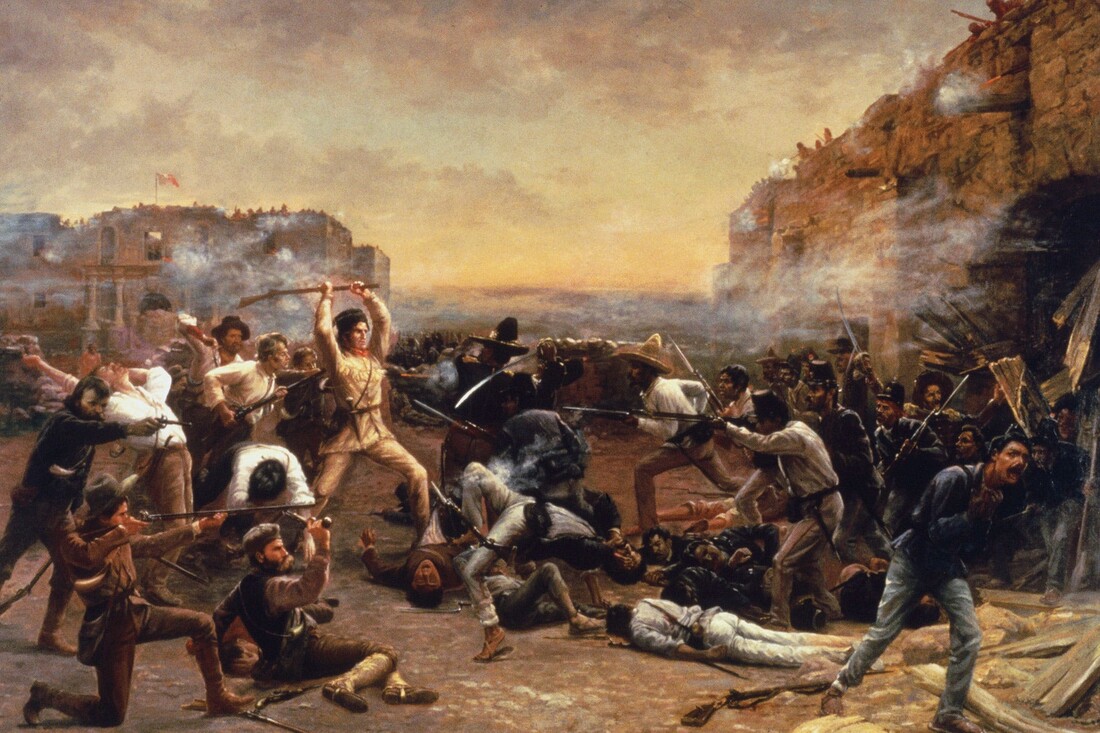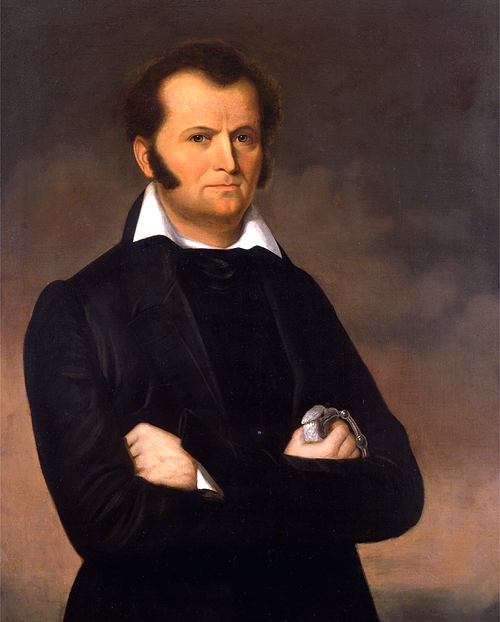Were Texians supposed to defend The Alamo?
Written by Nate Aleshire
The Battle of the Alamo was a 13-day siege of a fort near the modern Mexican-American border, towards the southern tip of Texas. Fewer than 200 men defended the stronghold against thousands of Mexican soldiers led by President General Antonio López de Santa Anna. The Battle of the Alamo is a prominent feature of Texan and American history and folklore, made even more notable for the participation of folk heroes like James Bowie and David (Davy) Crockett. However, what was the tactical advantage of having so few soldiers defend the post? This was a question that was actually pondered by General Sam Houston, and he apparently could not come up with a reasonable answer. Houston wanted the garrison in the Alamo to gather supplies and artillery, then destroy the fort in order to prevent the Mexican army from gaining it.
One myth about the Alamo revolves around this fact, and the implications that it has regarding the fort’s defenders. Some believe that leaders at the Alamo, mainly William Travis and James Bowie, simply ignored Houston’s order. A primary argument in favor of this view states that Bowie decided that Houston was wrong, and put his faith in the defenses at the Alamo. However, the biggest problem with this idea is that General Houston was not in total control of the army he commanded. Rather, he answered to Texas Governor, Henry Smith.
While it is true that Houston wanted the Alamo evacuated and destroyed, he did not get to give that order. This is simply because his commander disagreed with him. Houston requested that the fort be abandoned and its munitions and men relocated, but Governor Smith rejected his proposition. Smith’s reasoning was simple: the Alamo couldn’t be so easily deserted. There were not enough horses or mules to relocate the artillery and supplies to other forts. So, if leaving the Alamo meant leaving behind weapons for the advancing Mexican army to turn against Texas, Smith denied any movement to do so.
One myth about the Alamo revolves around this fact, and the implications that it has regarding the fort’s defenders. Some believe that leaders at the Alamo, mainly William Travis and James Bowie, simply ignored Houston’s order. A primary argument in favor of this view states that Bowie decided that Houston was wrong, and put his faith in the defenses at the Alamo. However, the biggest problem with this idea is that General Houston was not in total control of the army he commanded. Rather, he answered to Texas Governor, Henry Smith.
While it is true that Houston wanted the Alamo evacuated and destroyed, he did not get to give that order. This is simply because his commander disagreed with him. Houston requested that the fort be abandoned and its munitions and men relocated, but Governor Smith rejected his proposition. Smith’s reasoning was simple: the Alamo couldn’t be so easily deserted. There were not enough horses or mules to relocate the artillery and supplies to other forts. So, if leaving the Alamo meant leaving behind weapons for the advancing Mexican army to turn against Texas, Smith denied any movement to do so.
In conclusion, General Houston may not have seen any strategic significance in the Alamo, but James Bowie did. Bowie believed that the fort and the nearby town of Bexar were essential to slowing down the advancing enemy forces and resolved to die in defense of the fort before abandoning it. He also wrote to Governor Smith, expressing that sentiment, giving his own opinion in open disagreement with Houston. In the end, Houston’s strategy to relocate assets from the Alamo was thwarted by both his superiors and those under his command. Governor Smith ultimately refused the order to destroy the Alamo, and James Bowie was confident of the fort’s importance to the defense of Texas.


